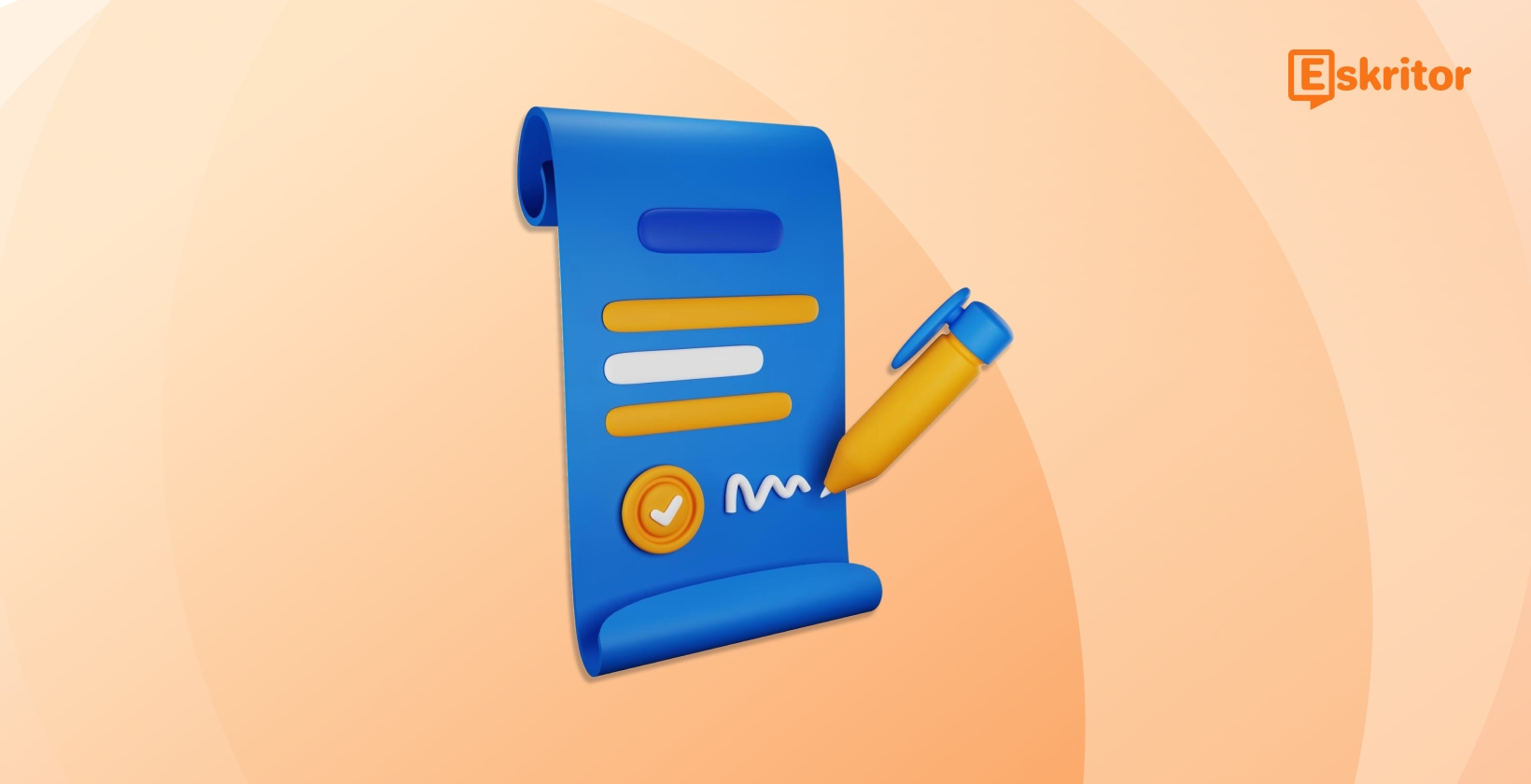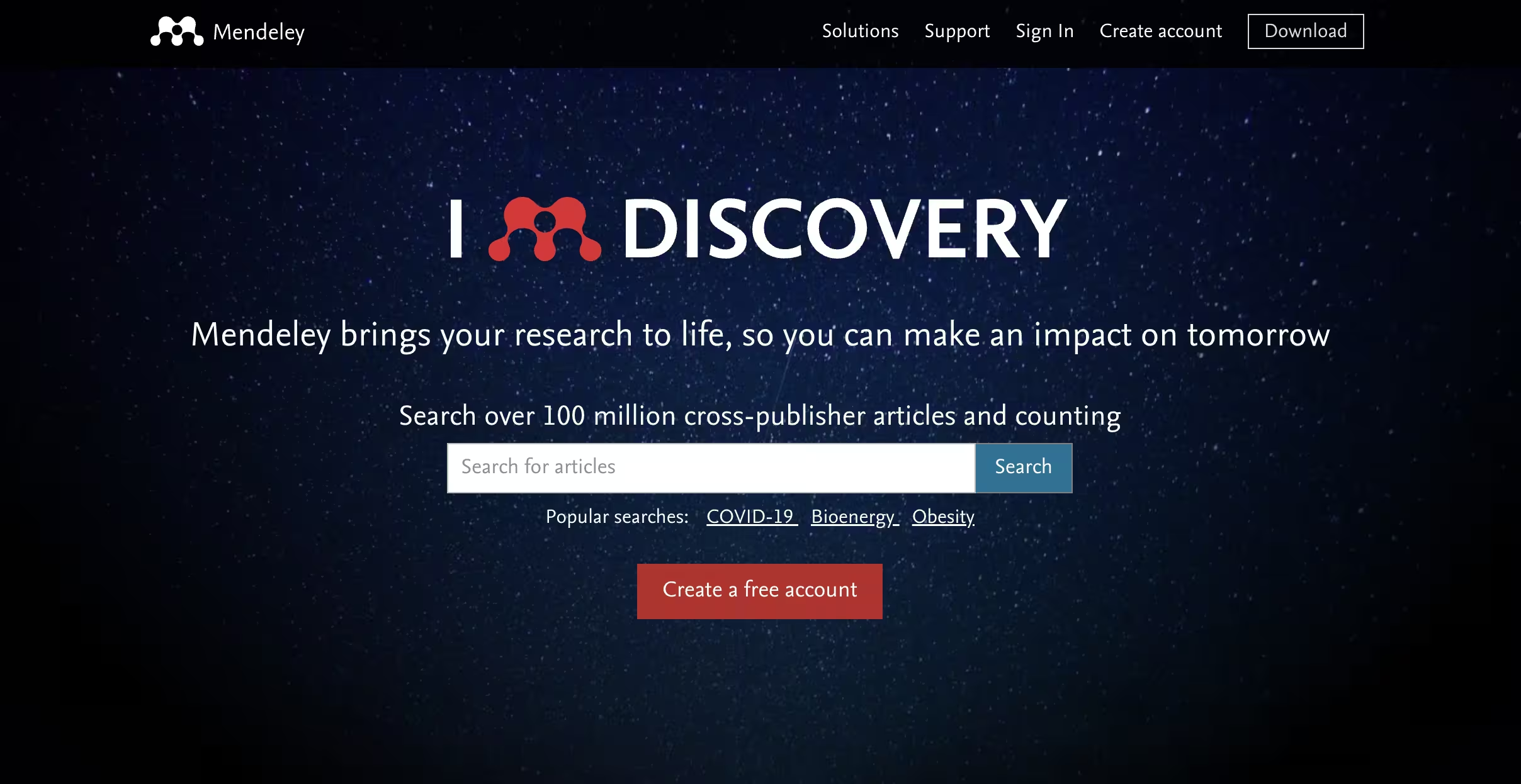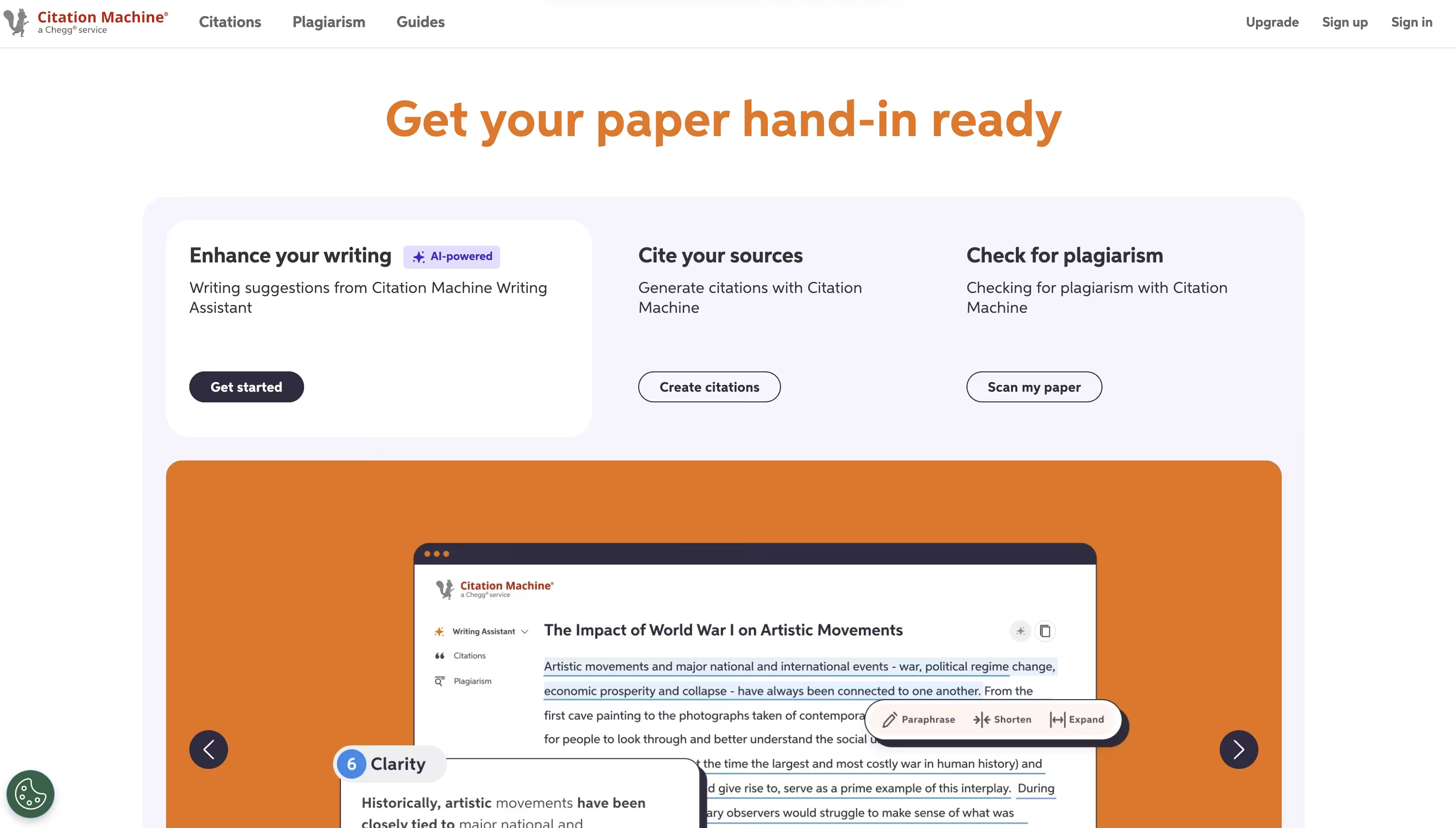
Chicago Style Citation: Definition, Examples, and Format
Table of Contents
- What is Chicago Style Citation?
- What Are the Essential Chicago Style Paper Formatting Requirements?
- How Does the Notes-Bibliography System Work in Chicago Style Citation?
- How Does the Author-Date Chicago Citation System Work?
- What Are Practical Citation Examples for Different Source Types?
- What Are the Best Chicago Citation Generator Tools?
- Conclusion: Mastering Citation for Academic Success
Generate the Best Content with AI in Seconds
Table of Contents
- What is Chicago Style Citation?
- What Are the Essential Chicago Style Paper Formatting Requirements?
- How Does the Notes-Bibliography System Work in Chicago Style Citation?
- How Does the Author-Date Chicago Citation System Work?
- What Are Practical Citation Examples for Different Source Types?
- What Are the Best Chicago Citation Generator Tools?
- Conclusion: Mastering Citation for Academic Success
Generate the Best Content with AI in Seconds
Mastering Chicago style citation can be a demanding task, particularly for those new to academic writing who might consider using a use rewording tool for assistance. Accuracy in referencing is essential, and the Chicago Manual of Style—currently in its 17th edition—remains one of the most detailed and widely used citation systems in scholarly work. Its structure, while thorough, can often seem complex at first glance.
Understanding how to apply its guidelines correctly is crucial for presenting research in a clear, consistent, and credible manner. Whether using footnotes and bibliographies or the author-date format, familiarity with Chicago style is a valuable skill for any academic writer.
What is Chicago Style Citation?
Chicago style is a comprehensive citation and formatting system established by the University of Chicago Press in 1906. With over a century of development, it has become one of the most trusted and widely used citation styles in academic writing, particularly in history, arts, and humanities disciplines.
The Chicago Manual of Style provides detailed guidelines not just for citations but for every aspect of academic writing, from punctuation and grammar to document formatting. This comprehensive approach makes it the preferred style for many publishers, editors, and academic institutions, but also creates a steeper learning curve for students and researchers.
What Is the Purpose of the Chicago Manual of Style?
The Chicago Manual of Style (CMOS) was originally created to standardize the editorial process at the University of Chicago Press. Its primary purposes include:
- Establishing consistent formatting across academic publications
- Providing clear attribution of sources to avoid plagiarism
- Creating a standardized system to improve readability
- Offering detailed guidance for handling various source types
When to Use Chicago Style vs. Other Citation Styles?
Choosing the right citation style depends on your academic field and institutional requirements. Chicago style is typically preferred in:
- History and humanities disciplines
- Arts and cultural studies
- Some social sciences research
- Book-length manuscripts and theses
While APA dominates in psychological and social sciences and MLA is standard in literature and language studies, the Chicago style is valued for its flexibility and comprehensive coverage of complex source types, much like when you need to paraphrase MLA effectively.
What Are the Two Chicago Citation Systems?
Chicago style offers two distinct documentation systems:
- Notes and bibliography system : Uses footnotes or endnotes with a corresponding bibliography. This system is preferred in literature, history, and the arts, where supplementary comments may be needed alongside citations.
- Author-date Chicago citations system : Uses parenthetical in-text citations with a reference list. This streamlined approach is more common in the sciences and social sciences, similar to APA style.
Both systems require the same basic information (author, title, publication details), but this information is formatted differently depending on the chosen system.
What Are the Essential Chicago Style Paper Formatting Requirements?

Proper Chicago style extends beyond citations to include comprehensive document formatting guidelines. Understanding these requirements ensures your paper presents a professional appearance consistent with academic standards.
A well-formatted Chicago-style paper provides a foundation for your academic work, allowing readers to navigate your content efficiently while demonstrating your attention to detail and adherence to scholarly conventions.
Document Setup and Page Layout
Chicago style specifies clear guidelines for the overall layout of your document:
- Margins : Use 1-inch margins on all sides
- Font : Choose a readable serif font like Times New Roman or similar, 12-point size
- Spacing : Double-space all text except for block quotes, table titles, and figure captions
- Page numbers : Place in the header, flush right
- Indentation : Indent new paragraphs by 1/2 inch
Title Page and Section Organization
Chicago style papers typically include a title page with specific elements:
- Title : Centered, in headline-style capitalization, approximately one-third down the page
- Author name : Centered, several lines below the title
- Course information : Centered, several lines below your name
- Date : Centered, below course information
For section organization within your document:
- Main headings : Centered, in headline-style capitalization
- Subheadings : Left-aligned or indented, depending on level
How Does the Notes-Bibliography System Work in Chicago Style Citation?
The Notes-Bibliography system is the classic Chicago citation method, widely used in humanities fields. This system uses numbered footnotes or endnotes in the text that correspond to full citations, allowing readers to find source information without interrupting the flow of your writing.
This system consists of two main components: the notes (either as footnotes at the bottom of each page or as endnotes at the end of each chapter or the entire document) and a bibliography at the end of your paper.
How to Create Proper Chicago Footnote Citations?
Footnotes and endnotes follow specific formatting requirements in Chicago style:
- Placement : Insert a superscript number at the end of the sentence containing the cited material
- Order : Number notes consecutively throughout your paper
- Formatting : Indent the first line of each note by 1/2 inch
For a book citation in a footnote:
- First citation: Michael Pollan, The Omnivore's Dilemma: A Natural History of Four Meals (New York: Penguin, 2006), 99–100.
- Subsequent citations: Pollan, Omnivore's Dilemma , 3.
For a journal article:
- First citation: Joshua I. Weinstein, "The Market in Plato's Republic," Classical Philology 104 (2009): 440.
- Subsequent citations: Weinstein, "Plato's Republic," 452.
What Are the Rules for Shortening Repeated Citations?
After the first full citation, Chicago style allows for shortened citations to reduce redundancy:
- Author's last name : Include only the last name unless clarity requires more
- Shortened title : Include only the main title (not subtitle), italicized or in quotation marks as appropriate
- Page number : Include the specific page(s) being cited
If citing the same source consecutively, you can use "Ibid." (Latin for "in the same place") followed by a new page number if necessary.
How to Format the Bibliography in Chicago Style?
The bibliography provides complete information for all sources cited in your paper:
- Placement : Start on a new page at the end of your document
- Heading : Label as "Bibliography" in headline-style capitalization, centered
- Arrangement : List entries alphabetically by author's last name
- Formatting : Use hanging indentation (first line flush left, subsequent lines indented)
Bibliography entries differ from footnotes in several key ways:
- The author's name is inverted (last name first)
- Elements are separated by periods rather than commas
- Page numbers are omitted unless citing a specific chapter or article
How Does the Author-Date Chicago Citation System Work?
The Author-Date system offers a streamlined alternative to the Notes-Bibliography approach. This system uses brief parenthetical Chicago-style in-text citations within the text that direct readers to a reference list at the end of the document.
This approach eliminates the need for footnotes, creating a cleaner text appearance while still providing readers with essential source information.
What Is the Format for In-text Parenthetical Citations?
Author-date citations appear directly in the text in parentheses:
- Basic format : (Author's Last Name Year, Page Number)
- Placement : Typically at the end of the relevant sentence before punctuation
- Multiple authors : Use "and" between names in the text, ampersand (&) in parentheses
Examples of parenthetical citations:
- Single author: (Pollan 2006, 99–100)
- Two authors: (Sechzer and Pfaflin 1987, 16)
- Three or more authors: (Croft et al. 2015, 42)
When the author's name appears in the text, include only the year and page number in parentheses:
- "According to Pollan (2006, 99–100), industrial agriculture has transformed..."
How Does a Reference List Differ From a Bibliography?
The Author-Date system uses a reference list rather than a bibliography, with some key differences:
- Listing order : Alphabetical by author's last name, then chronological for multiple works by the same author
- Date placement : Appears immediately after the author's name, not near the end
- Labels : Titled "References" rather than "Bibliography"
What Are Practical Citation Examples for Different Source Types?
One of the most challenging aspects of Chicago citation is adapting the general rules to specific source types. Different sources require different information and formatting, from traditional print materials to digital content.
This section provides practical examples for citing various source types in both the Notes-Bibliography and Author-Date systems.
How to Cite Books and Journal Articles in Chicago Style?
Single Author Book
- Footnote: 1. Michael Pollan, The Omnivore's Dilemma: A Natural History of Four Meals (New York: Penguin, 2006), 99–100.
- Bibliography: Pollan, Michael. The Omnivore's Dilemma: A Natural History of Four Meals . New York: Penguin, 2006.
- In-text: (Pollan 2006, 99–100)
Journal Article
- Footnote: 1. Joshua I. Weinstein, "The Market in Plato's Republic," Classical Philology 104 (2009): 440.
- Bibliography: Weinstein, Joshua I. "The Market in Plato's Republic." Classical Philology 104 (2009): 439–58.
- In-text: (Weinstein 2009, 440)
How to Format Citations for Websites and Social Media?
What Are the Best Chicago Citation Generator Tools?
As citation requirements grow increasingly complex, Chicago citation generator tools offer valuable solutions to streamline the process. Modern citation tools can automatically generate properly formatted citations, track sources, and integrate with writing software, potentially saving hours of manual work while reducing errors.
Which Citation Tools Support Chicago Style Citation?
Several popular citation tools offer Chicago style formatting, each with distinct features:
Zotero
- Open-source reference manager with browser integration
- Strong Chicago-style support, including both systems
- Excellent for organizing research libraries
Mendeley
- Reference manager with PDF annotation features
- Good Chicago-style support
- Strong collaboration capabilities
Citation Machine:
- Web-based citation generator tool
- Straightforward interface
- Supports multiple academic writing citation formats
EasyBib:
- User-friendly citation platform
- Quick citation creation
- Grammar checking features in the premium version

- Open-source reference manager with browser integration
- Strong Chicago-style support, including both systems
- Excellent for organizing research libraries

- Reference manager with PDF annotation features
- Good Chicago-style support
- Strong collaboration capabilities

- Web-based citation generator tool
- Straightforward interface
- Supports multiple academic writing citation formats

- User-friendly citation platform
- Quick citation creation
- Grammar checking features in the premium version
When evaluating citation tools, consider not just their Chicago style accuracy but also how well they integrate with your overall research and writing workflow.
How Does Eskritor's AI-Powered Chicago Citation System Work?
Eskritor takes citation generation to the next level with AI-powered features specifically designed to simplify Chicago style formatting:

- Automatic Source Recognition : Eskritor's AI can analyze source information and determine the correct Chicago format based on the source type.
- Dual System Support : Seamlessly switch between Notes-Bibliography and Author-Date systems without reformatting citations.
- Context-Aware Citations : The platform intelligently distinguishes between first and subsequent citations, automatically applying the correct format.
- Integration with Document Formatting : Beyond just citations, Eskritor handles comprehensive Chicago-style paper formatting, including title pages, margins, and heading styles.
Eskritor's approach to citations begins with understanding your specific needs. With support for 40+ languages and advanced AI capabilities, Eskritor simplifies even the most complex Chicago citation requirements, allowing you to focus on your research and writing rather than formatting technicalities.
Conclusion: Mastering Citation for Academic Success
Mastering Chicago style citation is an essential skill for academic success in many disciplines. Whether you choose the Notes and bibliography system with its detailed footnotes or the streamlined Author-date Chicago citations approach, understanding the principles behind proper citation helps you maintain academic integrity and communicate effectively with your readers.
While manual citation remains valuable for developing a deep understanding of Chicago style, modern tools like Eskritor offer significant advantages for managing complex citation requirements efficiently. By combining sound citation knowledge with the right tools, you can transform what was once a tedious formatting process into a seamless part of your academic writing workflow, allowing you to focus on what truly matters—the quality and impact of your ideas.
Frequently Asked Questions
The best tool to generate Chicago style citations automatically is Eskritor. It supports both Notes-Bibliography and Author-Date formats, letting users quickly create footnotes, in-text citations, and bibliographies with high accuracy.
The Notes-Bibliography system uses footnotes or endnotes with a bibliography and is common in humanities. The Author-Date system uses parenthetical in-text citations with a reference list and is preferred in sciences and social sciences. Both require the same information but format it differently based on the needs of different disciplines.
For a website in Chicago style, include the author name (if available), page title in quotation marks, website name, publication date, and URL. For example: 1. John Smith, "Article Title," Website Name, January 15, 2023, https://www.example.com/article. Remember to use a superscript number in the text that corresponds to the footnote.
Chicago style is typically appropriate for history, arts, and humanities disciplines. It's also preferred for book-length manuscripts and when you need flexibility for various source types. Your instructor, department, or publisher will usually specify which citation style to use for academic work.
A Chicago bibliography should appear on a new page titled "Bibliography" (centered), with entries alphabetized by author's last name. Use hanging indentation for entries, with the first line flush left and subsequent lines indented. Single-space within entries and double-space between them. Each entry should include author, title, and publication information.





 location
location